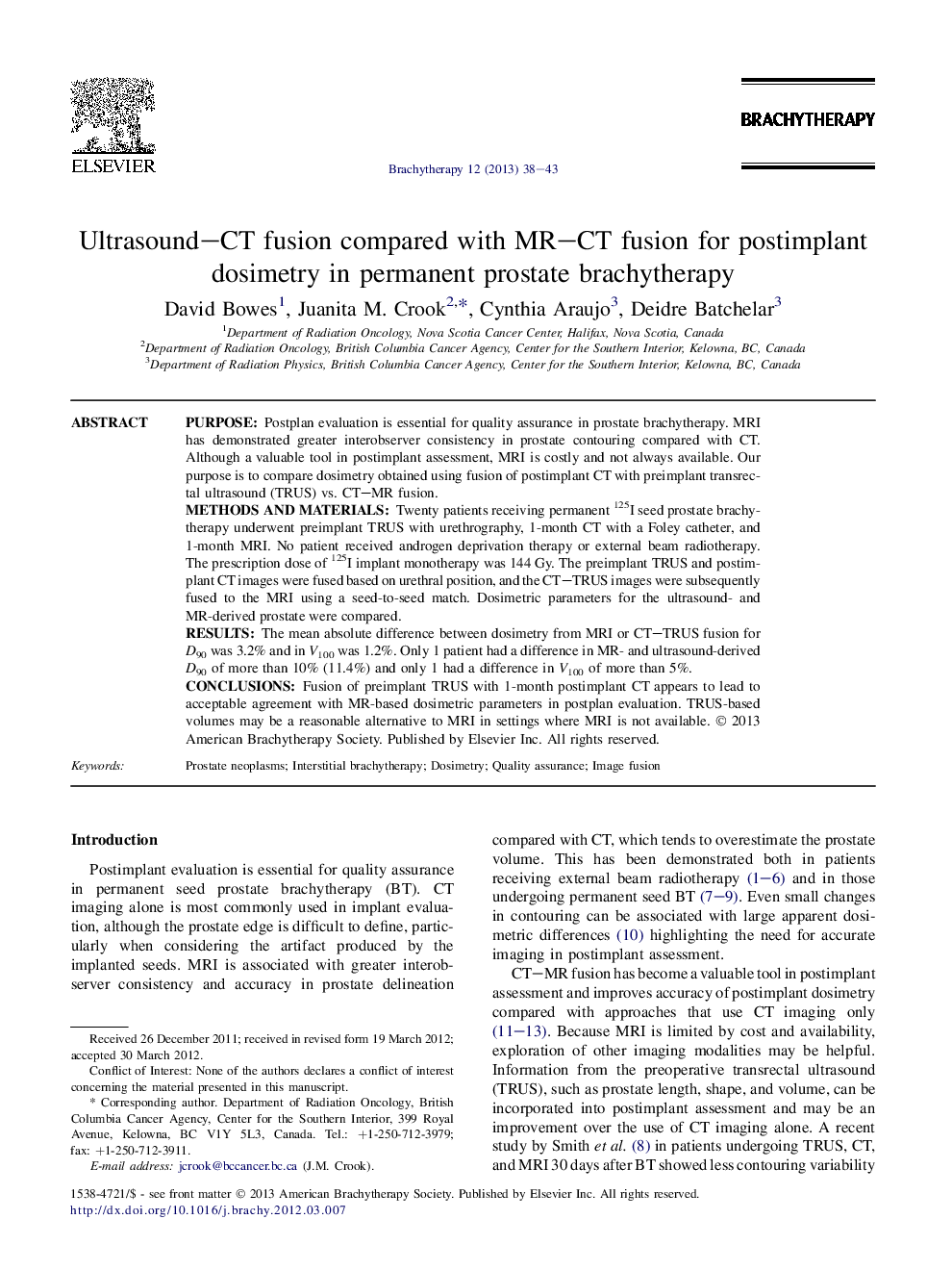| Article ID | Journal | Published Year | Pages | File Type |
|---|---|---|---|---|
| 6189842 | Brachytherapy | 2013 | 6 Pages |
PurposePostplan evaluation is essential for quality assurance in prostate brachytherapy. MRI has demonstrated greater interobserver consistency in prostate contouring compared with CT. Although a valuable tool in postimplant assessment, MRI is costly and not always available. Our purpose is to compare dosimetry obtained using fusion of postimplant CT with preimplant transrectal ultrasound (TRUS) vs. CT-MR fusion.Methods and MaterialsTwenty patients receiving permanent 125I seed prostate brachytherapy underwent preimplant TRUS with urethrography, 1-month CT with a Foley catheter, and 1-month MRI. No patient received androgen deprivation therapy or external beam radiotherapy. The prescription dose of 125I implant monotherapy was 144Â Gy. The preimplant TRUS and postimplant CT images were fused based on urethral position, and the CT-TRUS images were subsequently fused to the MRI using a seed-to-seed match. Dosimetric parameters for the ultrasound- and MR-derived prostate were compared.ResultsThe mean absolute difference between dosimetry from MRI or CT-TRUS fusion for D90 was 3.2% and in V100 was 1.2%. Only 1 patient had a difference in MR- and ultrasound-derived D90 of more than 10% (11.4%) and only 1 had a difference in V100 of more than 5%.ConclusionsFusion of preimplant TRUS with 1-month postimplant CT appears to lead to acceptable agreement with MR-based dosimetric parameters in postplan evaluation. TRUS-based volumes may be a reasonable alternative to MRI in settings where MRI is not available.
